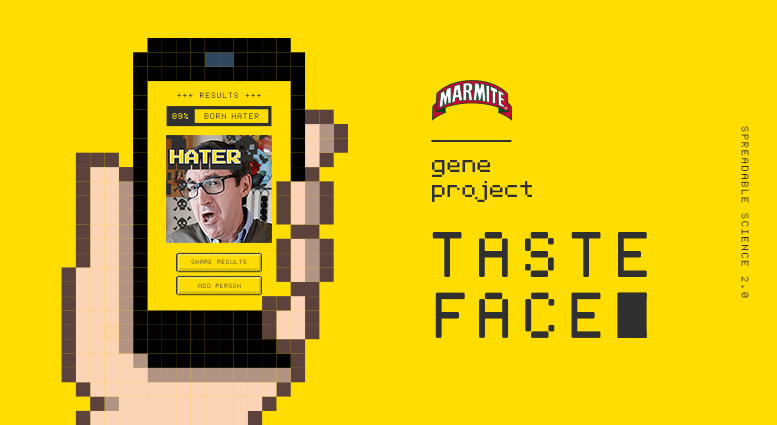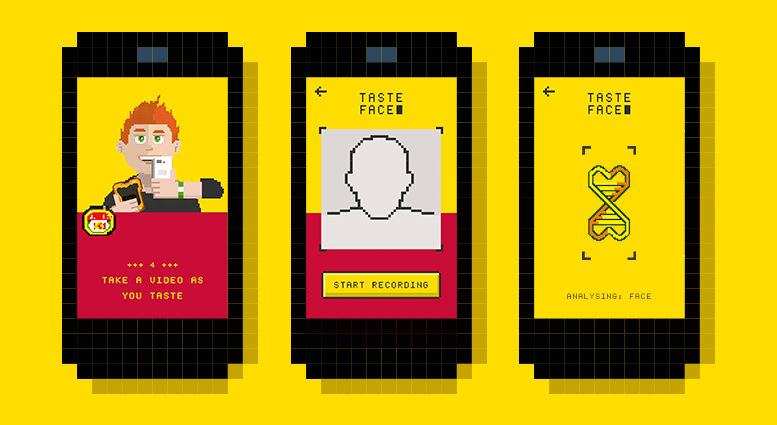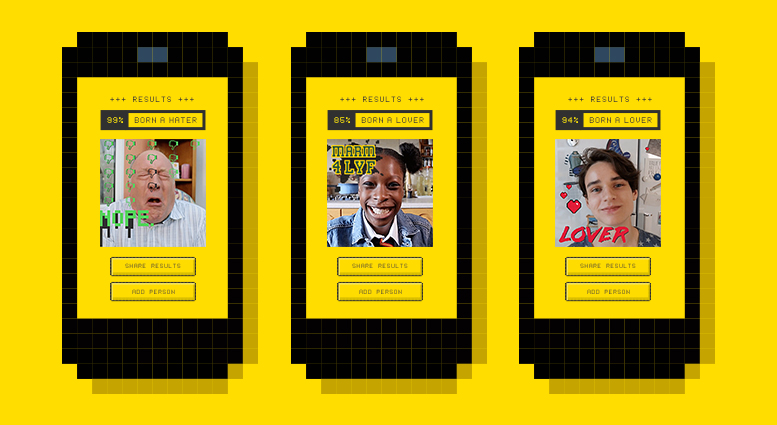
CHALLENGE
“You either love it or hate it.” A phrase that’s been synonymous with Marmite since its creation.
This year, the brand set out to discover the real reason why the sticky stuff has long divided the nation, and attract a younger generation of lovers.
The answer was, surprisingly, science. In partnership with leading boffins, they discovered ‘The Marmite Gene’. It turns out your genetics determine whether you’re born a lover, or a hater.
This ground-breaking news got lots of people talking about Marmite again, but our challenge was to get families up and down the country actually tasting it.
SOLUTION
TasteFace.
An innovative sampling web app that invites people to try Marmite, and uses facial recognition technology to analyse their reaction to it.
TasteFace builds on the Microsoft Emotion API, that recognises facial expressions across a set of eight emotions; anger, contempt, disgust, fear, happiness, neutral, sadness and surprise. We built a bespoke algorithm to convert these eight emotions into a sliding scale of love and hate.
The web app also recognises the complexity of emotion between your love and hate for Marmite, rating it from 0 to 100%.
At the end of the experience, test-takers are prized with a customisable reaction GIF to share across their own social channels, announcing their Marmite-y fate. The experience also has multi-user functionality, and can be passed around a group to produce a combined shareable asset – ideal for families to enjoy.
So while fun, TasteFace serves a real purpose, by cleverly encouraging trial, and in turn recruiting the next generation of lovers.
ACTIVITY
The TasteFace experience did two key jobs for product consideration – prompting our audience to dig out their Marmite from the back of the cupboard and reconsider it as an everyday spread, and to provide a fresh, engaging way of distributing free samples and encouraging their consumption.
We ensured that the end product of the experience was inherently shareable, enabling people to proudly assert their ‘lover’ status or share an amusing GIF of their ‘hater’ reaction.

Allowing our audience to share the results to social media directly from the experience (and letting them customise this content) maximised the opportunity for organic sharing.
Finally, the wealth of data we acquired through the sample and testing process can be used in future communications to shed light on the way the nation feels about Marmite, as well as allowing us to customise and target future messages based on known preferences.
With reach in mind, we made an extra effort to develop TasteFace with web technologies and server-side equations in order to make the experience as app-like as possible.
The bleeding-edge technology and algorithms employed were wrapped in an intuitive user experience with a fun and engaging design. This allowed the users to forget all the technological complexities of the process – videos getting chunked into pieces, analyzed, and categorized with accurate reaction recognition – and instead enjoy the output: a funny GIF.

The TasteFace experience extended the reach and message of the Marmite Gene campaign, allowing us to democratise the process of ‘testing’ yourself for the gene and providing a compelling reason to sample the product and get the whole family involved.
Visit tasteface.marmite.co.uk on your mobile, butter up some toast and try Marmite.
RESULT
The experience has extended the reach of the above-the-line campaign, allowing the public to take part in the experiment. Over 436k people have visited TasteFace to date and have spent 2.5 minutes, on average, playing with the content.
The Campaign beat X-Factor to the top trending spot on Twitter.
Importantly, we’re getting the product in people’s hands and inspiring them to try it. Within the first 6 weeks over 50k samples have been distributed with two more paid media pushes still to come.
As a result, sales of Marmite increased 60% in Tesco.
TasteFace has allowed us to generate PR coverage over and above a traditional ATL campaign, receiving coverage from tech-focused blogs and drawing the attention of Microsoft’s AI Division, who expressed an interest in working with AnalogFolk as creative partners as a result of this activity.
It was also recognised as Campaign magazine’s #2 Digital Innovation of 2017.
Finally, this activity has provided us rich consumer data, allowing us to talk to lovers and haters with tailored messaging while using our initial findings to inspire further creative work.